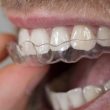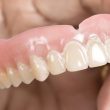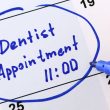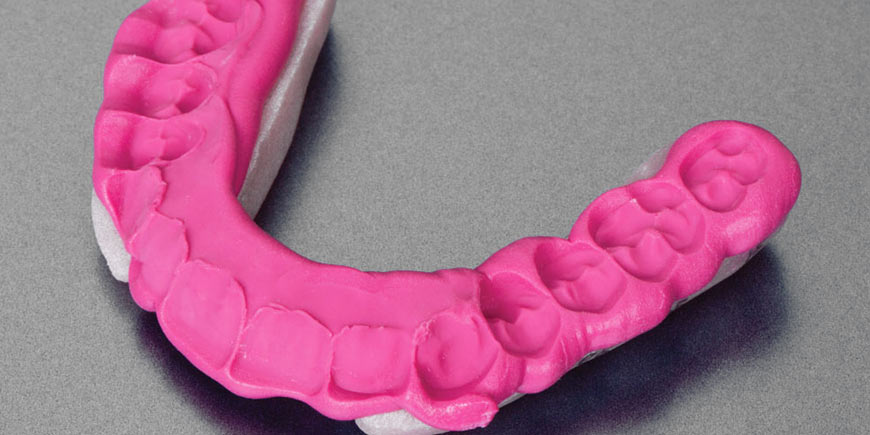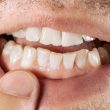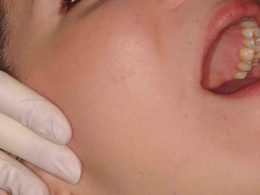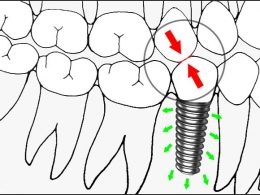Table of Contents
Occlusion is defined as the way the teeth are related when the lower jaw (mandible) and the upper jaw (maxilla) meet. It is the way teeth come into contact in any kind of functional relationship.
A normal occlusion is important because it allows oral functions to develop properly, provides good esthetics or facial appearance and it is necessary for the prevention of many dental, periodontal and/or joint diseases.
We can also speak of normal occlusion as that condition in which the maxilla and mandible have skeletal bases of the correct size, well located vertically, transversely and sagittally; with well aligned teeth that are properly related in the three planes of space, with ideal inclinations, close proximal relationships, good horizontal and vertical overbite, adequate function during jaw excursions, and above all; that it does not cause aesthetic or functional problems.
The lack of a normal occlusion in the individual, is called a malocclusion. Malocclusion can affect teeth, chewing, speech, aesthetics and other functions of the oral cavity. Malocclusions can occur for a wide variety of reasons. These include, but are not limited to: heredity, trauma, systemic and degenerative diseases, excessive wear or loss of teeth, psychological stress, bad habits, and iatrogenic dental treatments.
How Do Malocclusions Affect the Different Components of the Masticatory System?
It is essential to understand that teeth are only one of the elements that compose our masticatory, stomatognathic or gnathological system. In addition to the teeth, this important functional system includes the gums, alveolar bone, periodontal ligament, mandibular muscles and temporomandibular joints (TMJs). All these elements work like a clock, in perfect harmony.
If when eating and chewing, the teeth are not related in a proper and balanced way, they will begin to wear, fracture and loosen; to later cause diseases in the periodontal tissues, muscles and joints. The chronicity of a malocclusion will almost always lead to what we know as temporomandibular disorder (TMD), a painful, limiting and difficult to treat facial pathology.
Malocclusions in Children and Adolescents
A malocclusion can manifest itself from the moment the teeth erupt, even the temporary ones. Generally, this type of incipient malocclusion is due to genetic factors that determine inappropriate position relationships between the jaws (skeletal malocclusions), or between their size and the size of the teeth contained in them.
Discrepancies or dental malocclusions are quite frequent, since one of the parents is the one who genetically determines the size of the jaws, and the other, that of the teeth. As they are not compatible, “dental crowding” occurs, a problem of position and alignment of the teeth when there is not enough space in the jaw to accommodate all of them. As a result, the teeth erupt mounted, misaligned or crowded together.
Dental crowding is one of the most frequent causes on which many orthodontic treatments focus, not only because of the aesthetic consequences it entails for the smile, but also because of the serious functional implications that it generates in the future.
Oral habits can also be a primary or secondary cause of malocclusions or dentomaxillofacial deformities. The degree of the alterations produced will depend on the duration, intensity and frequency of the habit. These habits are usually considered automatic reactions that can manifest themselves in times of stress, frustration, fatigue or boredom; as well as lack of parental attention, tensions in the family environment and emotional immaturity. The most frequent are finger suction, atypical swallowing, lip interposition, tongue thrust and mouth breathing; among others.
Correcting this type of malocclusions (dental and skeletal) during childhood and adolescence, is the best way to provide favorable conditions for a healthy, attractive and long-lived dentition.
Malocclusions in Adults
They are usually caused by facial trauma, emotional stress, parafunctional habits, loss of teeth that are not replaced quickly and/or iatrogenic or poor quality dental treatments.
Facial Trauma
Facial trauma can directly and immediately generate malocclusion, and are usually caused by traffic accidents (about 50%), assaults, gunshot wounds, sports of high risk (cycling, karate, hiking, mountaineering, bullfighting) and occupational accidents.
Trauma to the TMJ (temporomandibular joint) can cause intracapsular hemarthrosis, ankylosis and/or osteoarthrosis of the only mobile joint in the face, and therefore, great difficulty eating and chewing.
Emotional Stress and Parafunctional Habits
Bruxism or habit of grinding the teeth is characterized by the fact that during sleep there are rhythmic, unconscious and relatively intense movements of the muscles involved in chewing. Regardless of the age at which it appears, nocturnal bruxism has several immediate consequences, such as wear of dental enamel and teeth, inflammation of the muscles of the jaw area and hypertrophy of the masseters; which are mainly involved in chewing.
All these events immediately disrupt the functional balance of the stomatognathic system, and if the habit is not treated on time, it can lead to excessive wear of teeth, loss of the vertical occlusal dimension, tooth fractures and severe malocclusion.
Although bruxism is considered a multifactorial disorder, it is usually associated with periods of stress or high emotional load.
Tooth Losses
Undoubtedly, the most common cause of malocclusion in adults. When teeth are lost and are not replaced quickly, the empty spaces stimulate and facilitate the movement or migration of neighboring and antagonist teeth. The teeth of the arch closest to the empty space move towards it inclining, forming retentive areas that make oral hygiene difficult, favoring the onset of periodontal diseases and altering the normal occlusion contacts.
In the same way, the opposing teeth (of the other arch) seek to compensate lost contact through their elongation or extrusion, altering the plane of occlusion and all the functions associated with the chewing process.
The loss of a single tooth is capable of altering the entire balance of the gnathological system and activating a process of rapid degeneration of all the others. That is why, when the first permanent tooth is lost, a repetitive and accelerated cycle of the phenomenon usually begins, which is often capable of mutilating a person’s dentition in a short time.
Bad Dentistry
Unfortunately, many Dentists are directly responsible for their patients’ malocclusions. Adhesive restorations or prosthetic devices made lightly and without respecting the patient’s occlusal pattern, will surely generate premature contacts and functional interferences capable of breaking the physiological balance of the masticatory system. We truly believe that nothing is worse than a poorly made prosthesis or restoration.
Other Possible Causes of Malocclusion
Although the previous 4 are the most frequent and important, there are also other biological conditions capable of generating malocclusion. Among them we find: TMJ infections, neoplasms, radiotherapy, myositis ossificans, rheumatoid arthritis, arthrosis and autoimmune diseases; among others.
How to Enjoy a Good Occlusion or Bite?
Simply by following some basic recommendations aimed at the prevention, identification and/or early treatment of any congenital or acquired condition that may alter the normal functioning patterns of our masticatory apparatus. Among the most important we find:
- Visit an Orthodontist Preferably in childhood, between 8 and 10 years of age, mainly to rule out or treat in time any harmful habit or any abnormal pattern of facial growth that is characteristic of skeletal malocclusion. In addition, at this age the Orthodontist will be able to know whether or not the patient will need braces to correct the alignment and gear of their teeth.
- Avoid Facial Trauma Basically those associated with its main causality: traffic accidents. Avoid alcohol consumption when driving, wearing a seat belt, equipping the vehicle with air bags and wearing a helmet in the case of motorcycles; will be measures capable of reducing up to 70% the chances of suffering maxillofacial trauma.
- Take Care of Sports Practice Through the use of helmets and masks, when permitted. A splint or mouth guard, preferably made to measure, is essential in any contact sport to protect the teeth and temporomandibular joints from impacts.
- Fight Stress Since it is directly associated with one of the most destructive parafunctional habits of the teeth: bruxism. Try as much as possible to lead an orderly life, with time for enjoyment and relaxation; and if necessary, do not hesitate to seek support or emotional therapy.
- Sleep with a Splint If you have doubts or have a feeling that you are clenching your teeth at night, it is time to seek a diagnosis and wear a splint. Although night splints do not solve the cause of the problem, they are very useful and necessary to relax the muscles, keep the joint healthy, and above all; protect the patient’s teeth.
- Replace Any Missing Tooth Immediately To avoid dental migration, extrusion and inclination, formation of diastemas, periodontal sacs, functional interferences, premature contacts and occlusal trauma. Furthermore, it is the only way to maintain the balance of the dental arches and the correct distribution of the chewing loads.
- Seek Specialized Dental Care Chiefly in those cases of very extensive or complex prosthetic restorations. Similarly, it is very important to be attentive to any minor restoration or repair of the dentition, since any excess material or over-contouring can represent the beginning of a malocclusion. If your Dentist’s work feels strange, causes discomfort or you feel it “high”, immediately schedule a new appointment for correction.
“Good Dental Occlusion or Bite, Is One of the Basic Pillars of Health and Functional Harmony of the Entire Stomatognathic System”.
DENTAL TIP
How to Save Thousands by Getting Dental Work in Venezuela
On average, dental work in Venezuela is about a third the price of what you are used to paying at home, without a drop in the quality of care. All the process takes is just a little research and a few more logistics. In the “Dental Tourism” category of this same blog we describe all the considerations necessary to get dental care done in Venezuela.
The first thing you want to do is get a quote for the dental work you need done by our team. Most of the time, simply sending a few photos and X-rays to us will do just fine. The online consultation will provide a strong idea of what will need to be done, and will be able to provide you with a pretty close cost estimate for the dental procedures.
Through our WhatsApp or Email you can ask all the necessary questions about the proposed treatment and its details. DENTAL VIP has specially trained personnel for this function.
Once the quote is approved, you must indicate the date of your trip to corroborate the treatment viability in the selected period, ensure your accommodation and proceed with the purchase of air tickets.
Congrats! Now you are on your way to saving thousands by getting dental work in Venezuela.


